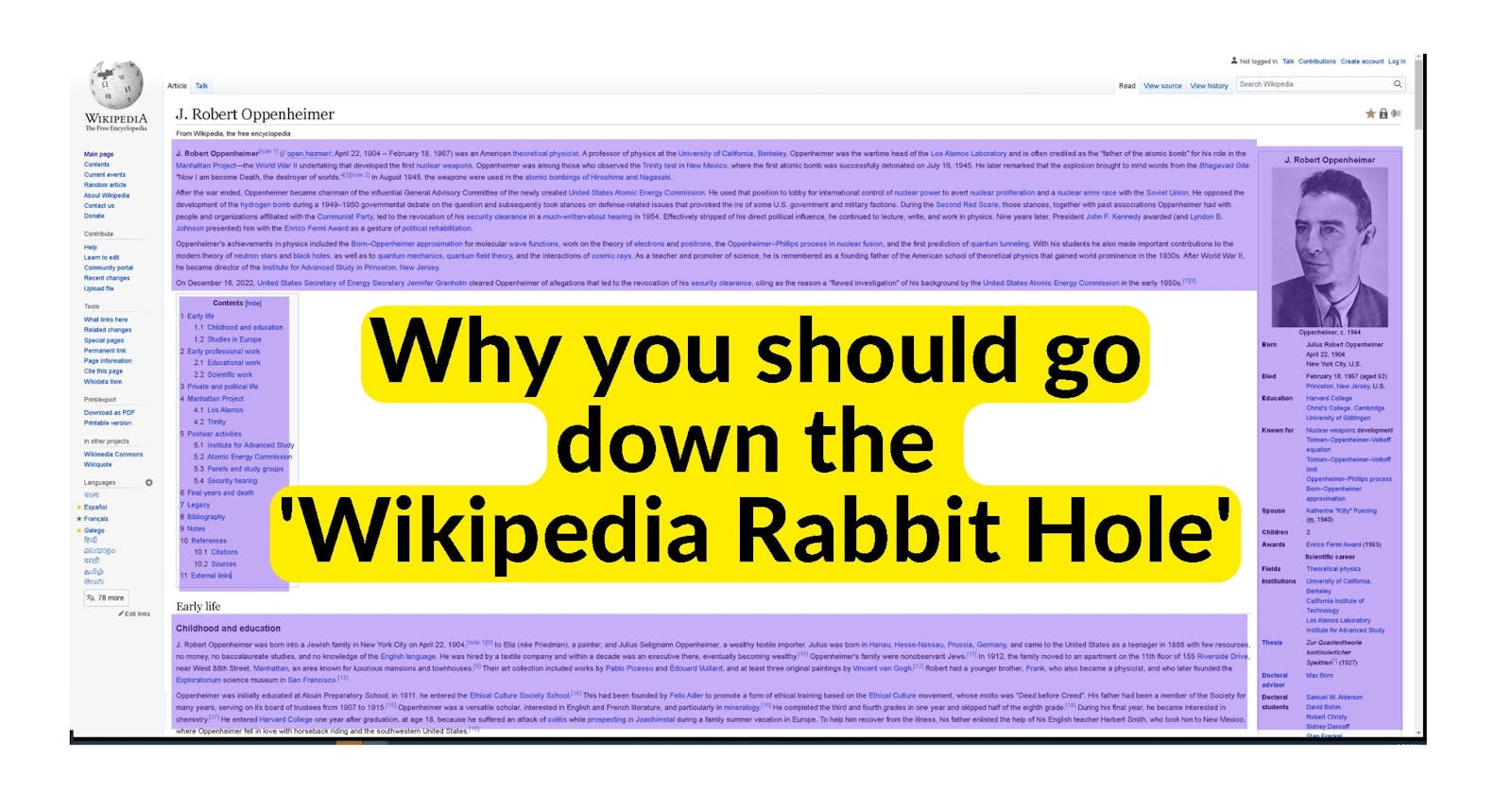UX engineers and designers, ever been down the Wikipedia Rabbit hole? You might want to, and here's why
If you have used Wikipedia, chances are that you have been down the Wikipedia Rabbit hole already.
"Wiki rabbit holes” are informally defined as navigation paths followed by Wikipedia readers that lead them to long explorations, sometimes involving unexpected articles.
I have been going down that path ever since my journalism days.
During my initial six years working as a TV journalist, I found myself going down the Wikipedia rabbit hole (though not always the best resource) to learn about new topics.
As if, those interconnected articles weaved a story for me and I could infer a theme from it.
As a software engineer today, I find that the Wikipedia rabbit hole technique is even more valuable for me, as I am able to explore and research various topics in-depth.
I always thought that the content of an article was the sole factor that led me to go down the rabbit hole, but it appears that user experience design also played a significant role in facilitating deeper navigation.
The paper "Going Down the Rabbit Hole: Characterizing the Long Tail of Wikipedia Reading Sessions" published by Piccardi et al has the below findings.
➡ Characteristics of article layout are associated with deep navigation in Wikipedia.
➡ Navigational links in the infobox can support the browsing experience, similar to reading a slideshow.
➡ The dynamics of falling into a "wiki rabbit hole" vary based on the time of day, the device used and starting article topic.
➡ Rabbit hole sessions are more common on desktop devices and at night.
➡ Articles about entertainment, sport, politics, and history are popular starting points for rabbit hole sessions.
➡ Rabbit hole sessions tend to consist of topically coherent articles.
➡ Rabbit hole sessions constitute a substantial number of overall reading sessions, far exceeding the number of active editors on Wikipedia.
➡ Rabbit hole sessions exhibit different patterns compared to the average of all sessions, which are dominated by short sessions.
In summary, the design and layout of articles, as well as the presence of navigational links in the right place, can greatly impact the experience of deep navigation and browsing.
These sessions, which often involve cohesive sets of articles and are more prevalent on desktop devices and at night, make up a significant portion of overall Wikipedia usage.
So UX engineers and designers, can these findings be applied to Knowledge Management portals and ‘Learn’ page websites?
What do you think?
Link to the research paper.
